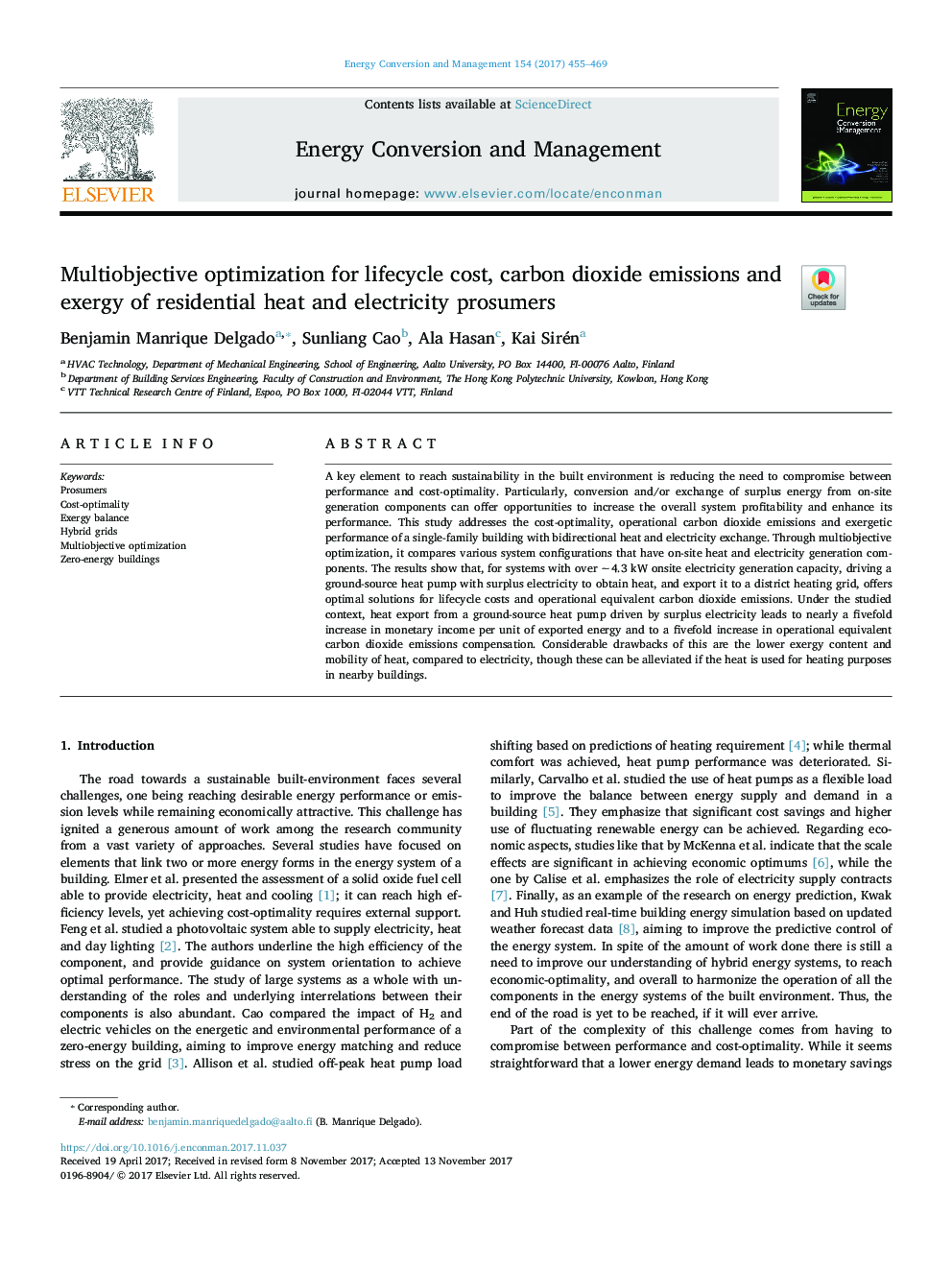| Article ID | Journal | Published Year | Pages | File Type |
|---|---|---|---|---|
| 7159676 | Energy Conversion and Management | 2017 | 15 Pages |
Abstract
A key element to reach sustainability in the built environment is reducing the need to compromise between performance and cost-optimality. Particularly, conversion and/or exchange of surplus energy from on-site generation components can offer opportunities to increase the overall system profitability and enhance its performance. This study addresses the cost-optimality, operational carbon dioxide emissions and exergetic performance of a single-family building with bidirectional heat and electricity exchange. Through multiobjective optimization, it compares various system configurations that have on-site heat and electricity generation components. The results show that, for systems with overâ¯â¼4.3 kW onsite electricity generation capacity, driving a ground-source heat pump with surplus electricity to obtain heat, and export it to a district heating grid, offers optimal solutions for lifecycle costs and operational equivalent carbon dioxide emissions. Under the studied context, heat export from a ground-source heat pump driven by surplus electricity leads to nearly a fivefold increase in monetary income per unit of exported energy and to a fivefold increase in operational equivalent carbon dioxide emissions compensation. Considerable drawbacks of this are the lower exergy content and mobility of heat, compared to electricity, though these can be alleviated if the heat is used for heating purposes in nearby buildings.
Related Topics
Physical Sciences and Engineering
Energy
Energy (General)
Authors
Benjamin Manrique Delgado, Sunliang Cao, Ala Hasan, Kai Sirén,
